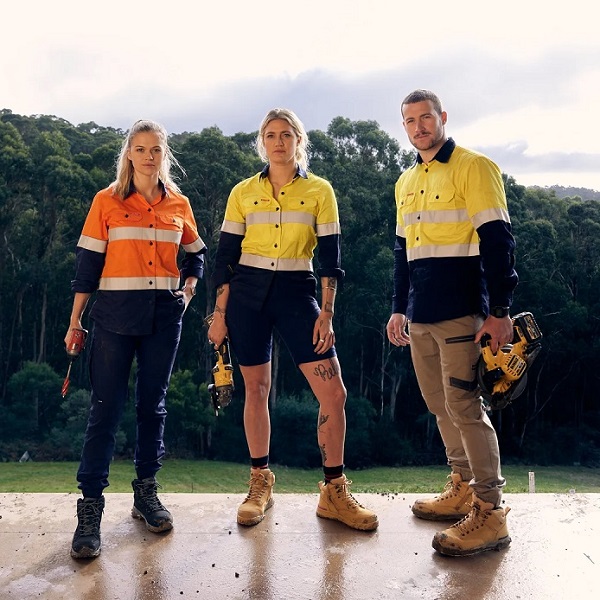
Tradies and SMEs risk missing out on $20,000 tax break before EOFY: Moneytech
As June 30 fast approaches, many Australian tradies and small and medium businesses are focused on tax compliance and reporting. But according to Moneytech’s Head of Group Sales & Distribution, Reece Ketu, the end of the financial year (EOFY) is also a critical window to reassess finance strategies and position for growth.
“EOFY isn’t just about reconciling the past, it’s a strategic opportunity to optimise your financial structure for the year ahead,” says Ketu. “Whether it’s replacing underperforming equipment, expanding your fleet, or improving productivity through new technology, asset finance can be a powerful tool when used proactively.”
One key advantage of investing in assets before June 30 is the potential to claim the Federal Government’s $20,000 Instant Asset Write-Off. For eligible businesses with an aggregated turnover under $10 million, this allows for an immediate tax deduction on the full cost of each qualifying asset under $20,000, provided it is first used or installed by 30 June 2025. The threshold applies per asset, enabling multiple purchase write-offs.
Importantly, this threshold is changing from 1 July 2025 to just $1,000, marking a significant change to asset-related tax policy and creating a narrow window to act before the current benefit expires. “Time is running out to take advantage of this generous write-off before it effectively disappears,” Ketu warns. “For many SMEs, this may be the last chance to maximise tax outcomes while upgrading essential assets.”
But the benefits extend well beyond tax. With ongoing credit constraints, rising operating costs, and lingering supply chain delays, many businesses are turning to asset finance as a more agile way to fund growth, preserve cash flow and stay competitive.
“Businesses need the ability to move quickly when the right asset becomes available, and to finance it in a way that aligns with their revenue cycles,” Ketu explains. “We’re seeing growing demand for tailored finance solutions that do more than fund machinery or expand fleet, they support broader capital and cash flow needs.”
According to Bryn Harwood, Partner at Tradies Accountant, many construction and trade clients are under significant pressure when it comes to cash flow, which is holding them back from making essential investments. “High interest rates and slow payers have led to hesitation around equipment purchases and other financial decisions. In some cases, businesses are waiting for interest rates to drop before committing, but that delay could cost them valuable deductions and productivity.”
Harwood says working capital pressures are prompting many SMEs to take a more conservative financial approach in the lead-up to EOFY. “We’re seeing a lot of clients preferring to pay down debt and preserve liquidity, rather than invest in growth. It’s understandable in this environment but the risk is falling behind on equipment upgrades or missing strategic opportunities that could improve cash flow in the longer term.”
In key sectors like construction, transport, and agriculture, asset finance is increasingly being used not only for equipment upgrades, but as a strategic lever to support working capital and operational agility.
Ketu says, now is the time for SMEs to conduct a comprehensive review of their finance arrangements. “Don’t just focus on what you need to buy. Look at the finance terms you’re currently locked into. Are they still competitive? Is your old equipment costing you more than it’s worth? Renegotiating or refinancing existing asset finance could unlock cash and operational efficiency without the need for large upfront investment,” he says.
Harwood also notes that finance structures need to be tailored to the specific business. “Construction is a highly regulated industry, so structuring finance needs to be approached on a case-by-case basis. A one-size-fits-all approach won’t cut it, especially for businesses managing multiple sites, compliance needs, and shifting project timelines.”
He adds that with labour being the biggest operational cost in most construction projects, businesses need to think beyond assets. “The shortage of skilled labour is severely impacting the construction industry. Having a solid strategy to hire and retain employees is just as important as the equipment you’re financing, it all comes back to how you structure your cash flow and plan for the future.”
Harwood also points to the growing need for SMEs to think long term. “The biggest mistake we see is short-term thinking. Businesses should be considering what the next two to three years looks like, particularly with changes to tax rules and the ATO’s treatment of interest on debt. Those not planning ahead may find themselves stuck with outdated equipment or uncompetitive finance.”
Ketu encourages business owners to ask whether their finance structures are still fit for purpose. Are repayments matched to seasonal income? Would bundling asset and working capital finance increase flexibility? Should asset finance be playing a bigger role in your long-term funding strategy?
“EOFY is a catalyst, but smart operators treat funding as an ongoing strategic lever, not just a tax-time activity,” says Ketu. “Done right, asset finance doesn’t just reduce tax, it boosts efficiency, improves cash flow, and strengthens your position to scale.”
With just weeks to go until the end of financial year, now is the time to act. SMEs should be asking: What assets need replacing or upgrading? Are current finance terms still aligned with business goals? Can we structure finance more strategically to support growth?
EOFY can be more than a compliance deadline; it can be an opportunity to reset, realign, restructure and plan ahead with purpose.
To find out how Moneytech can support your EOFY strategy, visit Moneytech – Business Financing Simplified for Australians.


